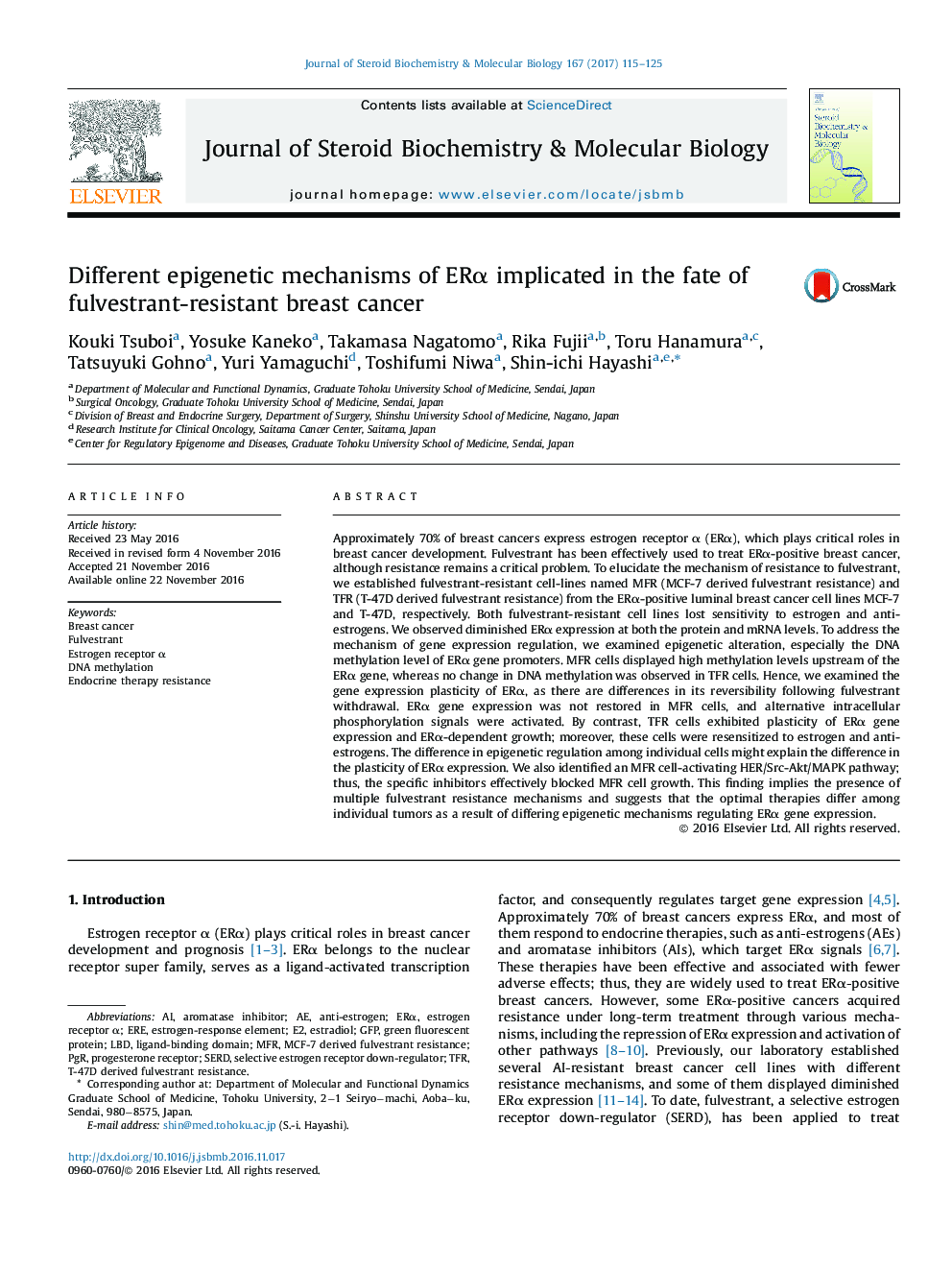| Article ID | Journal | Published Year | Pages | File Type |
|---|---|---|---|---|
| 5513115 | The Journal of Steroid Biochemistry and Molecular Biology | 2017 | 11 Pages |
â¢We evaluated the mechanism of resistance to fulvestrant in MFR and TFR cell lines.â¢High methylation levels upstream of the ERα gene were observed in MFR cells.â¢Following fulvestrant withdrawal, ERα gene expression is not restored in MFR cells.â¢Specific inhibitors in the HER/Src-Akt/MAPK pathway block MFR cell growth.â¢Multiple epigenetic mechanisms regulate ERα gene expression.
Approximately 70% of breast cancers express estrogen receptor α (ERα), which plays critical roles in breast cancer development. Fulvestrant has been effectively used to treat ERα-positive breast cancer, although resistance remains a critical problem. To elucidate the mechanism of resistance to fulvestrant, we established fulvestrant-resistant cell-lines named MFR (MCF-7 derived fulvestrant resistance) and TFR (T-47D derived fulvestrant resistance) from the ERα-positive luminal breast cancer cell lines MCF-7 and T-47D, respectively. Both fulvestrant-resistant cell lines lost sensitivity to estrogen and anti-estrogens. We observed diminished ERα expression at both the protein and mRNA levels. To address the mechanism of gene expression regulation, we examined epigenetic alteration, especially the DNA methylation level of ERα gene promoters. MFR cells displayed high methylation levels upstream of the ERα gene, whereas no change in DNA methylation was observed in TFR cells. Hence, we examined the gene expression plasticity of ERα, as there are differences in its reversibility following fulvestrant withdrawal. ERα gene expression was not restored in MFR cells, and alternative intracellular phosphorylation signals were activated. By contrast, TFR cells exhibited plasticity of ERα gene expression and ERα-dependent growth; moreover, these cells were resensitized to estrogen and anti-estrogens. The difference in epigenetic regulation among individual cells might explain the difference in the plasticity of ERα expression. We also identified an MFR cell-activating HER/Src-Akt/MAPK pathway; thus, the specific inhibitors effectively blocked MFR cell growth. This finding implies the presence of multiple fulvestrant resistance mechanisms and suggests that the optimal therapies differ among individual tumors as a result of differing epigenetic mechanisms regulating ERα gene expression.
